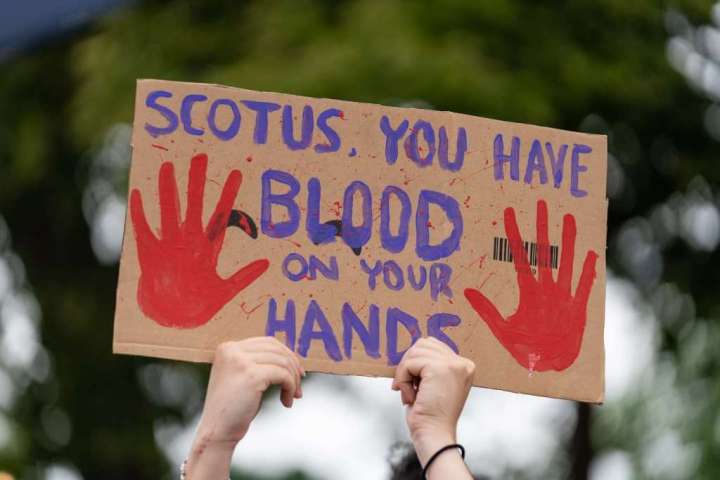Is the Supreme Court naive or just kidding when the majority holds that abortion rights must be struck down as a way of bringing Americans together? I’m going with naive, because the same majority repeatedly extols the superior wisdom and judgment of state legislatures — an opinion that can be held only by people who have never seen a real state legislature in action. This is what America gets from raising its most powerful jurists in sealed ideological bubbles like rare orchids, uncontaminated by life.
The court’s abortion ruling pours gasoline on our culture-war fires

The last Supreme Court justice with firsthand experience as a state lawmaker, Sandra Day O’Connor, co-wrote the most recent abortion-related opinion that was struck down on Friday. She knew exactly how helpful state legislatures would be in healing this thorny division, which is why she did not give them the job.
A lot of work went into beefing up the leaked first draft of Justice Samuel A. Alito Jr.’s majority opinion striking down the right to abortion. The sweeping opinion issued Friday in Dobbs v. Jackson Women’s Health Organization takes on O’Connor’s Planned Parenthood v. Casey precedent forthrightly, instead of with the glancing attention given in the draft.
But the result feels no more sincere. The opinion still reads as if the result came first and the reasoning was tacked on afterward. Casey is criticized for failing to lead to what is described in its opinion as “the contending sides of a national controversy to end their national division.” Yet the majority would surely not wish for its ruling to face the same test. I will go out on a limb and predict that Alito’s opinion will in no way pacify the United States’ culture wars.
The Dobbs opinion asserts no clear limits on the restrictions that states can impose on abortion, except possibly — possibly — in cases where the mother will die if she continues her pregnancy. After the draft was leaked in early May, state legislators scrambled to dream up the most extreme restrictions possible, including laws prohibiting travel to jurisdictions where abortion is legal.
Follow David Von Drehle‘s opinions
FollowThe prospect of cops hauling teenage girls into confinement to gestate babies will not bring Americans together
No, Dobbs will not calm American politics. It is gasoline on a fire.
Nor will this be the end of Supreme Court cases concerning controversial matters — including abortion. In coming years — sooner rather than later — the court is sure to face the question of no-exceptions laws; that is, statutes that ban all abortions, including in cases of rape, incest and danger to the mother. Is there any constitutional protection at all for women and girls against being forced to carry a pregnancy?
The Dobbs opinion suggests the answer may be no. Alito quotes at triumphal length the litany of state laws outlawing abortion back in the good old days when women could not vote. By doing so, the opinion suggests that those blanket laws, with their criminal penalties, would be perfectly fine today, constitutionally speaking. The justices should brace for cases testing that extreme position.
There’s still more controversy beyond that. Some states are sure to pass laws designed to prevent distribution of abortifacient drugs, which account for a majority of abortions today. These laws will end up in court. Even more explosive: The antiabortion movement is attempting to extend the constitutional meaning of “person” to include the fetus. Aware that a closely divided Congress is unlikely to outlaw abortion nationally, “fetal personhood,” as the project is known, will offer the court a way to enact a national ban through the side door, if a majority so chooses.
If the justices honestly believe that Casey was too controversial, just wait until they get to personhood.
Ultimately, the problem with Dobbs is neither its naivete nor its ridiculous moments. It is fundamentally insincere. Perhaps this is not surprising from a panel of justices who dissembled over the abortion issue during their confirmation hearings. Yet nowhere in the hand-wringing over a divided America is there the slightest mention of the court’s own role in stoking division. Dissenters on the court have been egging on the antiabortion movement from Day One of Roe v. Wade. From 1973 onward, for nearly half a century, there has always been a vocal minority ready to say, in effect: This matter is not really decided. Keep trying.
Abortion is not unique in that regard; the same could be said of many controversial issues. Sometimes it is the job of the Supreme Court to decide controversial issues. And the failure of a ruling to create universal harmony is not evidence that the ruling was wrong.
If only there were more conservatives on the court and fewer radicals of the right. Chief Justice John G. Roberts Jr. took a forlorn stab at genuine conservatism by pleading with the majority to honor the judicial principle of deciding controversies on the narrowest available grounds. Nothing doing. Having given every mook in the United States the right to a hidden handgun on Thursday, on Friday the radicals took a sweeping scythe to abortion rights.
America has had about as much of this healing as we can stand.






